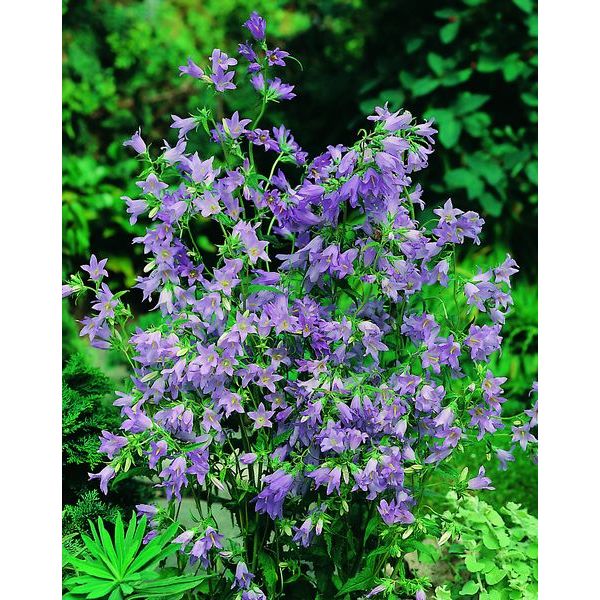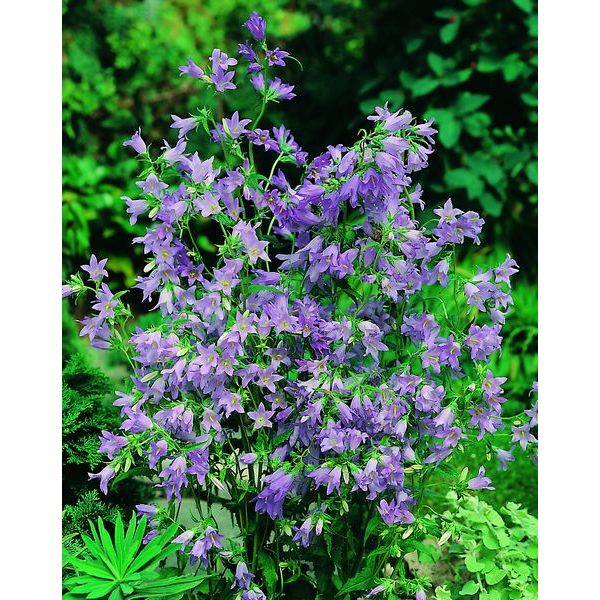1
/
of
1
Campanula Trachelium Nettle Leaved Bellflower
Campanula Trachelium Nettle Leaved Bellflower
Packet Size: 200 Seeds
Regular price
£0.90
Regular price
Sale price
£0.90
Unit price
/
per
Shipping calculated at checkout.
Couldn't load pickup availability
This native wild flower, Nettle Leafed Bellflower, is particularly suited to supporting pollinators and has many useful traits that make it a ‘grow in your own garden’ choice. The tall spikes of beautiful mauve-blue bell-like flowers open from the top of the stem and are nectar magnets for Bumble Bees, Hoverflies and other useful visitors. Adaptable and happy in shade or sun, this will even grow between and under other plants such as roses or up against hedges or fences. It suits many garden styles and, coastal gardeners take note, tolerates salty air. Add some later summer colour, and an unusual edible, to your plot.
🌸 Flowering: July - September
📏 Height: to 100cm
🌿Perennial.
SOW
• In spring or autumn.
• March to May surface sow and barely cover the seeds. When seedlings are large enough to handle, prick off into pots and grow on. Gradually harden off and plant out in September or October, spacing 30cm apart for flowering the following summer.
• Can be sown directly May-June
• Autumn either outside, where they are to flower, or in seed trays and covered very lightly with compost. Trays should be left outside over winter and germination will normally occur the following spring.
GROW
• This perennial can take 2-5 years to reach full height
• Divide established clumps in spring
• Cut back after first flush of flowers to encourage more blooms
• Forms spreading mat of leaves with the tall spikes of flowers.
📌USES
Wildlife-friendly
• Bumble Bees and some varieties of Solitary bees
• Butterflies, hoverflies and night-flying moths are also attracted
• The flowers and leaves are hairy; this helps pollinators to grip while collecting pollen
• This presence of this plant can be an indicator of ancient woodlands in the wild.
• Growing this native plant helps support biodiversity.
• Recognised by the RHS as good for pollinators.
Edible
• The young, tender leaves of the nettle-leaved bellflower can eaten raw in salads or cooked like spinach.
• The plant is used as a wild green in Minestrella soup (Northern Tuscany).
Garden
• Useful choice for shade and dappled shade. Will also tolerate sunny spots
• Utilise its natural preferences and plant it by hedges, and under roses or in-between shrubs.
• It tolerates dry soils so is useful beside paths, walls and fences.
Medicinal
• This was a traditional remedy for sore throats. The alternate name throatwort is derived from that belief and the species name trachelium refers to its use for Trachea related problems.
• Please note we do not promote the medicinal use of plants – guidance and information should be sought elsewhere. Always seek professional medical advice and consult trusted sources for health-related guidance.
Alternative Names
Bats-in-the-Belfry, Blue Foxglove, Blue Devils, Coventry Bellflower, Gloves Of Mary, Throat Root or Throatwort.
Suits
• Coastal gardens (resistant to salty air)
• Woodland & hedgerows
• Woodland and orchards
• Grassland & wildflower meadows (prairie planting)
• Cottage and informal garden
• Flower borders and beds

Collapsible content
Sowing
- Mar
- Apr
- May
- Jun
- Sep
- Oct
Harvesting / Flowering
- Jul
- Aug
- Sep

